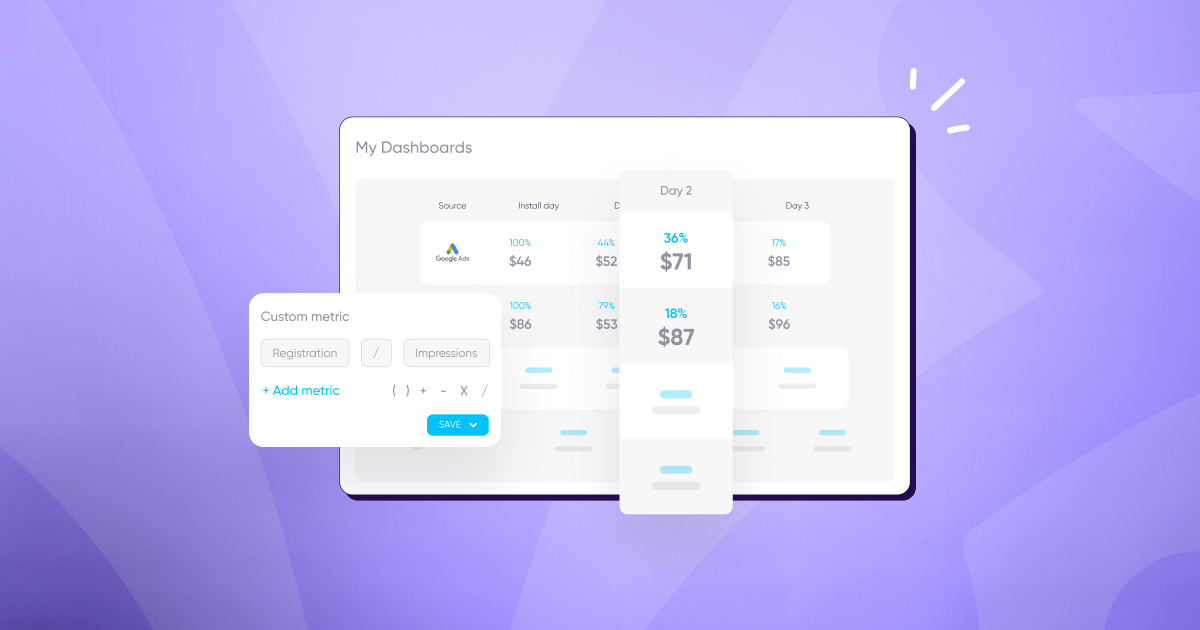
How to get your first 10,000 mobile app installs
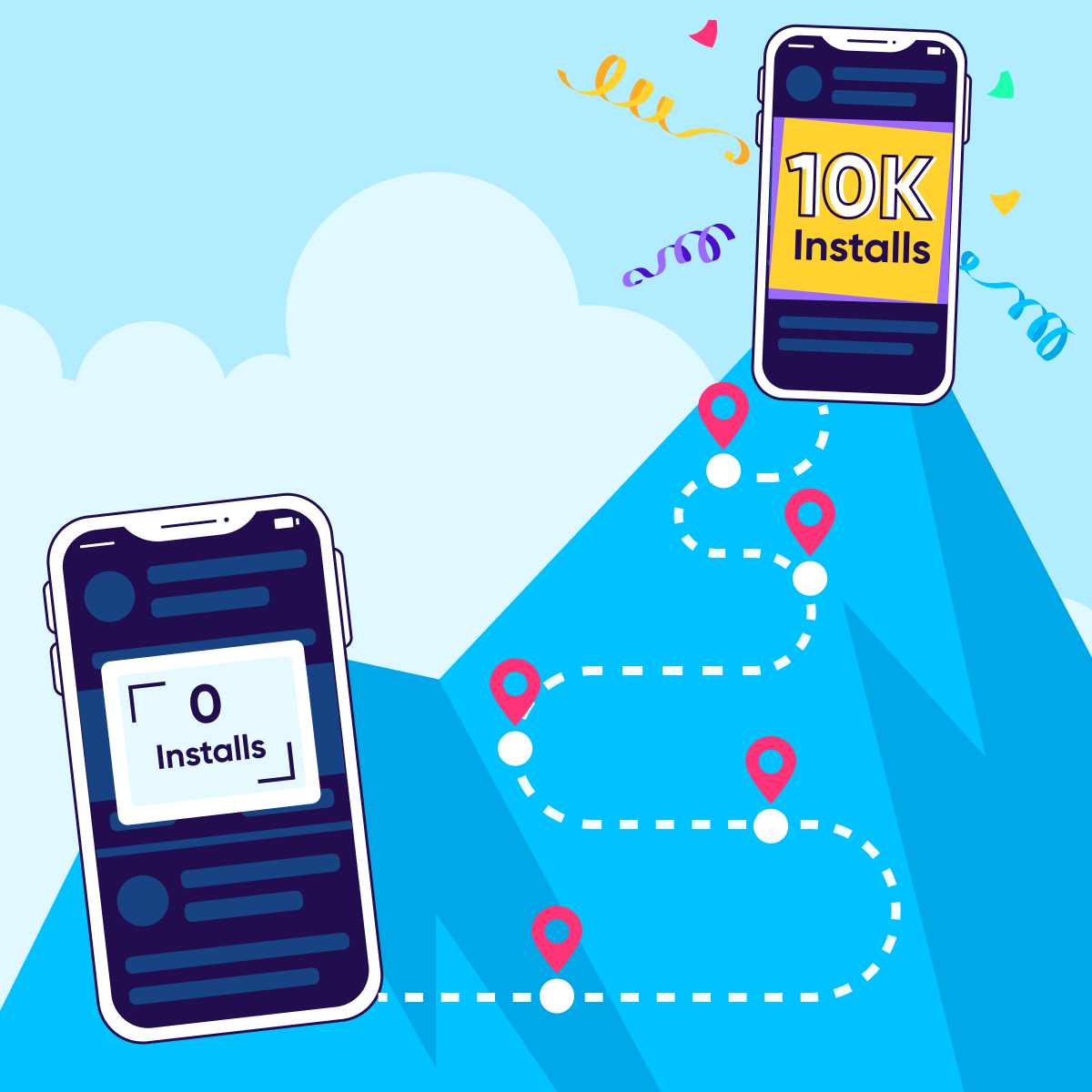
Build a great product and the downloads will follow. It’s a tempting thought when you’re building your app from scratch. But, with around 5.6 million apps in the Apple App Store, Google Play Store, and Amazon Appstore combined, more and more apps are fighting for the same audience as you.
Think of it like the music industry. There are thousands of talented musicians out there with incredible songs, but very few break onto the main stage. The difference between those who make it and those who don’t isn’t only talent, but distribution: getting their music played on the radio, licensed in movies, or promoted in TV shows can really help artists on the path to stardom.
It’s the same for app marketers: you need to not only build a great product that solves a real problem, but also put it in front of the right people. There’s no magic formula or viral TikTok hack to take your app from 0 to 10,000 installs overnight, but there are four key steps you can take to maximize your chances of success.
Step 1: Solve a real problem
Before you get too excited about a beautifully designed app, you need to do your due diligence to see what the market appetite is. Be honest: are you trying to solve a problem that doesn’t exist? This research process will not only stop you from investing in a potentially costly mistake, but also narrow down your focus on building an exceptional app.
Research is where 85% of your time should be when launching your app.
Maya Levin @Bazaar Voice
Here are some common reasons why you’re not driving installs:
- You’re not solving an interesting problem
- Your pricing is wrong
- No one has heard of you
- Existing apps are already great
How do you diagnose your problem? Research your audience.

Be obsessed with your audience
The first step is to learn everything you can about your target audience. Go beyond the basic demographic data and get into their heads about their issues, interests, and even media consumption habits. Digging into online communities is a good start, but nothing beats conducting your own research and running your own interviews.
In your research process, you want to find out four things:
- How do they feel about the problem you’re trying to solve?
- How are they solving the issue today (are they turning to competitor apps, or relying on manual processes)?
- How big of a challenge is the problem today?
- How much are they willing to pay for a better solution?
Research will help dictate your creative to not only grab the attention of your target audience, but to leave something good behind.
Maya Levin @Bazaar Voice

Research your market
Brilliant ideas are a dime a dozen. And the best app ideas aren’t always super complex. Instead, they solve a specific problem in the market, giving you that “why didn’t I think of that?” moment.
Start by taking a look at your competition. How do they describe themselves? What do they do well? How could they be better?
Once you gather your research, develop a position that describes how you can specifically beat your competitors. For example:
- Cost driven: we’re cheaper than our competitors and just as good
- Niche: we provide a solution that’s specific to a niche, rather than a generic all-in-one app
- Quality: we’re the best and no one else comes close
- Unique: we’re the only app that does this one thing
Step 2: Build a high-converting foundation
Before you go draining your entire ad budget, build a solid foundation. This includes nailing down app store optimization, or ASO for short.
Building a high-converting app store page will ensure you’re making the most of the traffic you’re paying for (saving you lots of money). ASO is something you’ll have to constantly improve throughout the lifespan of your app, which is why you want to start off on the right foot to guarantee your app’s long-term success.
There are a few key elements to being successful with ASO:
- Keyword research: identifying the highest-value keywords that are relevant, searched often, and have little competition
- Title and description: must include your keywords and draw interest
- Visual appeal: your product screenshots, app previews, and videos must be professional and eye-catching
- Reviews: generate positive buzz for credibility
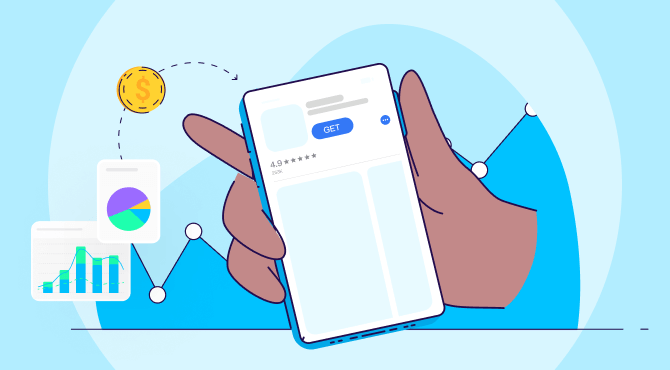
While these are some general guidelines, the various app marketplaces each have their own quirks, so be sure to understand the differences between them and see what works on each platform. For more information, visit our ASO hub for updated resources on ASO best practices.
Step 3: Promote like a rock star
Now this is where you’ll really get creative. The first 10,000 installs are absolutely crucial, which is why you might be tempted to look for a shortcut or pay for bots. But if you want real growth, it’s worth cracking the code on organic marketing.
Build a genuine community, generate natural excitement, and have influencers promote your app for free — and your app will snowball. Here are a few other ways you can put your app in front of the right people.

Nail and leverage your owned media channels (and engage consistently)
Every app developer dreams of going viral and waking up to TikTok notifications blowing up their phone. But when you’re targeting a mass audience, you may be alienating your core target – and people can sniff out what you’re trying to do.
Committing to building a real and engaged community is ultimately going to be the most sustainable strategy. It’s not only about creating engaging content online, but also answering community questions and listening to what your current users have to say. If you’re able to foster these conversations, you won’t have to brainstorm new content ideas – your community will do it for you.
When you start out, don’t try to be on every single social channel. Choose two to three channels first and really get good at each one. Each channel has different audiences and content formats, so becoming an expert creator will take time. It also helps to consume content yourself, so you understand the tone, look, and feel of the formats that work.
Going viral is about quality rather than quantity. Your focus should be on how you can deliver value – whether it be through humor or education!
Earn media with influencers
If you make the life of an influencer easier, they’re going to love you for it. Especially if you’re solving a core issue, like counting calories for fitness lovers or automating a difficult part of someone’s job.

Draw up a list of creators who are in your niche, big or small, and let them know why you would love for them to try your app. Perfect your email pitch by quickly telling them about what you’re building and why.
You may be surprised when you get a few bites – and even a free endorsement or two. If you don’t have much of a budget, you can get creative and incentivize influencers by creating an affiliate link that pays per install.
Launch user acquisition campaigns (paid media)
The early phase of paid acquisition is easily the hardest – you don’t know which channels work and which ones don’t. Instagram, TikTok, Meta, Google, X (Twitter), Snapchat, and App Store are all channels you can get started with. This is where you go back to your research phase – where does your target demographic like to get their content?
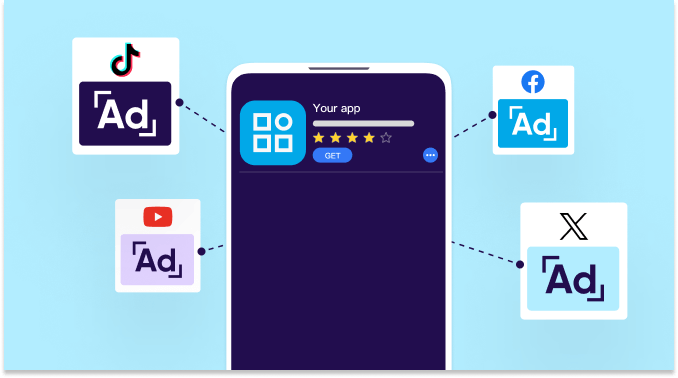
Use the research you gathered to find one or two channels that you think would work best. Don’t do everything at once and ensure you have a solid budget plan. And don’t forget to go back to your research and really look at what kind of creatives work best on those platforms.
If you need to trim down your ad budget, take a close look at your cost per install. You may be getting high impressions cheaply, but they might not be the most relevant audiences. Ultimately, the most important metric is how much it costs for a user to install your app.
Leverage your existing users
If you’ve already got the ball rolling and your current users are active on your app, use the power of referrals to grow fast. Reward existing users with free in-app features or upgrades when they refer their friends. This is an easy way to turn your early adopters into advocates and build rapport. After all, wouldn’t you be more likely to download an app if a trusted friend recommended it?
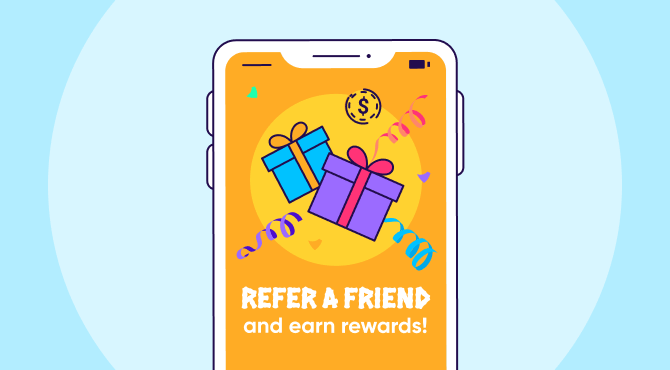
You can also encourage your most dedicated users to leave a review, which will undoubtedly help boost your ASO.
Ultimately, you want to focus on user engagement and retention – ensure you’re constantly improving the app experience, using timely push notifications, updating the app regularly, and offering customer support where it’s needed. These are all great tactics to build word of mouth naturally.
Honorable quick-fire mentions
Now that we’ve covered the majority of the bases, here are a few more ways you can generate more downloads:
- Submit your app for an award or enter a competition
- Get your app included in directories
- Add social elements to your app to make sharing easy
- Update your app regularly to boost ASO
- Launch your app on Product Hunt
- Join startup communities like Growth Mentor, Indie Hacker, and Founders Network
- Answer questions and get involved in communities and forums like Quora and Reddit (take inspiration from Caliber’s ad that generated thousands of downloads)
Step 4: Get the right tools and frameworks in place
The early days of your app will be scrappy – you’ll find success in experimenting and doing things that don’t scale, like emailing users individually or conducting interviews. But there will be no long-term success unless you prioritize data and measurement.
If something isn’t measured in mobile app marketing, it didn’t happen.
Without accurate data, how will you know where your ad budget is going or what channels are the most (or least) profitable? Where should you reallocate budgets? A Mobile Measurement Partner (MMP) can help you measure campaign performance across multiple channels and ensure you get the data you need to scale up your campaigns.
App analytics will also help you see how users behave and make data-driven decisions to improve your app. They’ll show you crucial metrics like retention rates, uninstalls, engagement, conversion rates, and even drop-offs.
Key takeaways
While the road to your first 10k installs may be daunting, checking off each step of the process will really increase your chances of success. With the right strategies, perseverance, and focus on delivering value to your target audience, you’ll achieve it in no time.
Here are a few more takeaways to help you on your way:
- The research process is the most crucial part of the marketing process – it will give you the focus you need to truly understand your audience and how you can help them.
- Don’t try every channel at once. Use the research you have to see which channels will be the most effective.
- Invest in a nice home – your app store listings should be visually stunning and the copy must be compelling. There’s no point drawing thousands of eyeballs to your storefront if no one converts!
- Cracking the code on organic content will determine your long-term success. Find a channel or two that work for you and create free content that educates or entertains your target audience. Raise your profile by making it easy for influencers to share your content, and encouraging existing users to spread the word.
- If it isn’t measured, it didn’t happen. Data will dictate every important decision in your marketing and development process. Invest in an MMP and app analytics tools to accurately measure your campaigns and better understand how users behave on your app.


